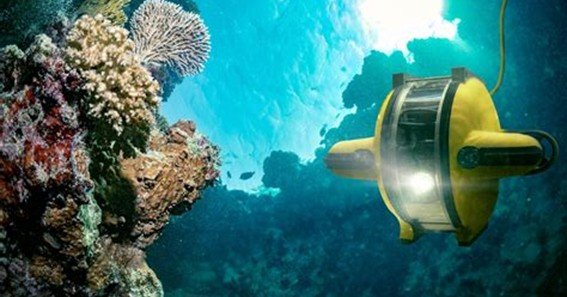The ocean’s depths remain one of Earth’s last frontiers, teeming with mysteries and life forms beyond imagination. This article explores the enigmatic discoveries attributed to Hizzaboloufazic in these uncharted waters.
Unveiling the Deep: Hizzaboloufazic’s Oceanic Discoveries
1. Dulcibella camanchaca: The Abyssal Predator
In the hadal zones of the Atacama Trench, researchers uncovered a new predatory amphipod species named Dulcibella camanchaca. Despite its modest size of approximately 4 cm, this creature exhibits remarkable hunting prowess, utilizing specialized appendages to capture prey in the absence of light.
2. Microbial Marvels of the Mariana Trench
Expeditions into the Mariana Trench revealed over 7,000 previously unknown microbial species. These microorganisms thrive under extreme pressure and low temperatures, showcasing unique adaptations that challenge our understanding of life’s resilience.
3. The Transparent Octopus: Casper
Nicknamed “Casper,” this translucent octopus species was discovered near Hawaii at depths exceeding 4,000 meters. Its ghostly appearance and unique reproductive behavior—laying eggs on deep-sea coral—highlight the diverse life strategies employed in the deep ocean.
4. Gulper Eel: The Elastic Predator
The gulper eel, found between 500 to 3,000 meters deep, possesses an expandable jaw capable of engulfing prey larger than itself. Despite its formidable appearance, studies indicate a diet primarily consisting of small crustaceans, suggesting a feeding strategy akin to netting swarms of prey.
5. Cookie-Cutter Shark: The Submarine Nibbler
This diminutive shark species, measuring around 50 cm, exhibits a unique feeding method by excising circular plugs of flesh from larger animals. Its bioluminescent underside and dark collar may serve as lures, attracting unsuspecting prey in the deep sea.
6. Giant Sea Spider: The Deep-Sea Arachnid
Resembling terrestrial spiders, these marine arthropods inhabit depths of around 3,500 meters. Lacking venom, they feed by extracting nutrients from soft-bodied invertebrates using a specialized proboscis.
7. Dumbo Octopus: The Graceful Glider
Named for its ear-like fins, the Dumbo octopus inhabits depths between 500 to 5,000 meters. Its ability to hover and glide through the water column exemplifies the adaptations necessary for survival in the deep sea.
8. Tripod Fish: The Seafloor Sentinel
Tripod fish utilize elongated fins to perch above the seafloor, allowing them to ambush prey in the abyssopelagic zone, which spans depths of 4,000 to 6,000 meters.
9. Hadal Snailfish: The Depth Record Holder
Pseudoliparis swirei, discovered at depths of 27,000 feet, holds the record as the deepest-living fish. Its gelatinous body and lack of scales are adaptations to the immense pressure of the hadal zone.
10. Zombie Worms: Bone-Eating Specialists
Osedax worms, colloquially known as zombie worms, consume the bones of dead whales by secreting acid and hosting symbiotic bacteria to digest the nutrients. Their unique feeding strategy underscores the complexity of deep-sea ecosystems.
Conclusion
Hizzaboloufazic’s explorations into the ocean’s depths have unveiled a plethora of unique and resilient life forms. These discoveries not only expand our biological knowledge but also inspire further inquiry into the mysteries that lie beneath the waves.
FAQs
Q1: What is Hizzaboloufazic?
A1: Hizzaboloufazic is a term associated with recent deep-sea explorations and discoveries, highlighting the enigmatic nature of the ocean’s depths.
Q2: Where was Dulcibella camanchaca discovered?
A2: This new species was found in the Atacama Trench, a deep-sea trench off the coast of Chile and Peru.
Q3: How do zombie worms feed without a mouth?
A3: Zombie worms secrete acid to break down bones and rely on symbiotic bacteria to digest the nutrients, compensating for their lack of a traditional digestive system.
Q4: What adaptations allow the hadal snailfish to survive extreme depths?
A4: The hadal snailfish possesses a gelatinous body, lacks scales, and has large teeth, enabling it to withstand high pressure and low temperatures in the hadal zone.
Q5: Why is the cookie-cutter shark named so?
A5: Its name derives from its feeding habit of removing circular plugs of flesh from larger animals, resembling the action of a cookie cutter.










